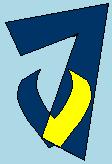
 | VENT 7 - SENSORS |
Sensors:
Sensors are located in a structure called the scientific payload.
The following sensors would be useful for us:
CTD(conductivity, temp and depth.) - passes current through the water. The conductivity measured is converted to a measure of the salinity. The thermomter is an electronic thermometer, which should have a very large range.It has a wet end, that is located in the free floodong space of the auv, and a dry end. Usually, it requires a small pump to provide flush water. It is about 24.8 cm long and 7.7 cm in diameter.
ADCP(acoustic doppler current profiler) Collects data on tide, current and mean depth. It works as a navigational instrument and current meter all in one. It is 10.2 cm in dimater, made of titanium, and is 20 cm long. Its range is about 50 metres from the vehivle. It consumes a power of 0.5 watt while operating.
Laser scanning:: Similar to radar. using laser light. Light of green frequency used as it can penetrate greater distances in the murky waters.
sonar ( side scanning sonar) Sends oout a fan of sound waves, and allows a map of the texture of the underwater area to be made. You need two of them, one on port and starboard side of the auv. It can measure to a distance of 40 metres on either side of the vehicle. It is cylindrical, and has a length of around 38 cm. Again, like the ctd it has a dry element, its electronics and processing units which are stored in the pressure hull. It should be located further from other seonsrs to prevent interference of transmitted and received signals. Usually, the side scan sonar is partially recessed in the vehicle, and is mounted forward of control surfaces to minimise turbulent flow over the transducers.
I suggest that our mapping auvs have hydroplanes, because, in order for the system to work efficiently, the AUV must not move around too much.
Sub-bottom profiler This provides high resolution images of the layers below the seabed, and has a penetration of 5-100 metres into the sea-floor, and a 100 mtere range. By using backscatter it allows an image to be buiolt up of the bottom, and it also has a wet end and a dry end. Wet-end is mounted in the flooded section of the AUV obvioulsy pointing downwards. It is synchronised with the multi-beam and sidescan sonar in order to miminmise the effects of interference. Connections are made simply by ethernat and normal ports.
Multi-beam sonarThis measures the depth of the ocean from the
AUV. It is also called a "swathe bathymetry sonar." It has a 150 degree wide swath and a frequency (samplong) of about 240khz. Measures direct depth, enabling complex underwater features to be mapped with precision. The swath range is over 500 metres wide. Range resolution on a picture produced is about 1.25 cm.
The length of the instrment is 27 cm, and it has a diameter of 32 cm. Its weight is 26.8 kg in air, and 4.8 kg in water.
ph Meter
inclinomter: Measures changes in angular alignment, so that the AUV can always ensure that it is travelling upright.
camera(mounted with lasers to increase its range, SIT camera -silicon intensifying tube.)
leak detector - ensure there are no leaks in the AUV. If there are any leaks the AUV will not launch. This is also located in the presure hull.
altimeter: measures depth.Porbbly not really needed because we have enough depth finders already.
transmissometer: Measures how much light passes through water..indicates the amount of substance dissolved or suspended in the water. Good for something like the super rov.
fluorometer:measures the amount of fluorescent radiation from a sample exposed to monochromatic light. It provides an indication of the amount of chlorophyll.
Flow injection analysis: Water is sucked in and concentration of trace elemnts like Fe measured.